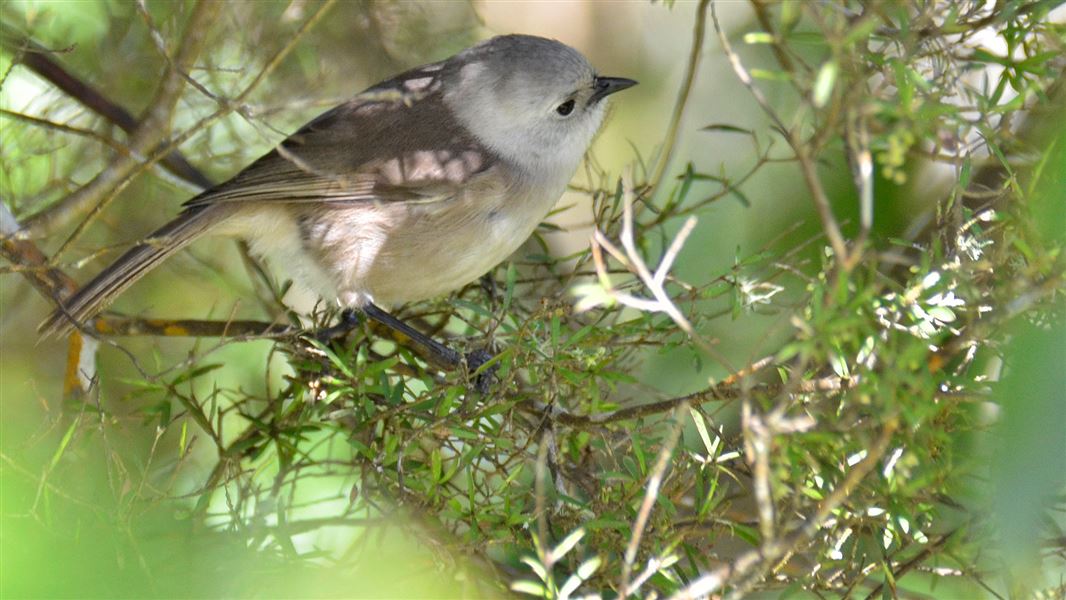New Zealand status: Endemic
Conservation status: Not Threatened
Found in: North Island of New Zealand
Species information: Whitehead/pōpokotea on NZ Birds Online
Facts
Whitehead/pōpokotea (Mohoua albicilla) are widespread and locally common in North Island beech forests, podocarp forest and old growth exotic plantation forests. However their range has shrunk since European settlement and they have disappeared from places such as Northland.
The birds are around 15cm long and have black beaks and eyes. Males have white heads and underparts, and pale brown upperparts, wings and tail. Females and juveniles are similar, but have brown on their nape and tops of their head.
In summer, chattering flocks of these ‘bush canaries’ can be heard as the juvenile birds do their teenage thing.
Sound recordings
Whitehead/pōpokotea flock (MP3, 707K)
00:44 – Flock feeding in a homestead garden and trees on Little Barrier Island.
Whitehead/pōpokotea territorial call (MP3, 3,549K)
03:46 – Adult male feeding under a canopy of beech trees in Whiteman's Valley, attracted by playback of calls, replying vigorously.
Our bird songs can be reused, even commercially, according to our copyright terms.
Threats
Unlike their South Island cousins the yellowhead or mohua, the whitehead is not a hole-nester which has probably helped it better survive the onslaught of introduced pests.
Forest clearance, once a threat, is luckily now a thing of the past.
